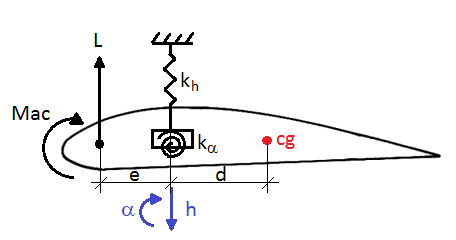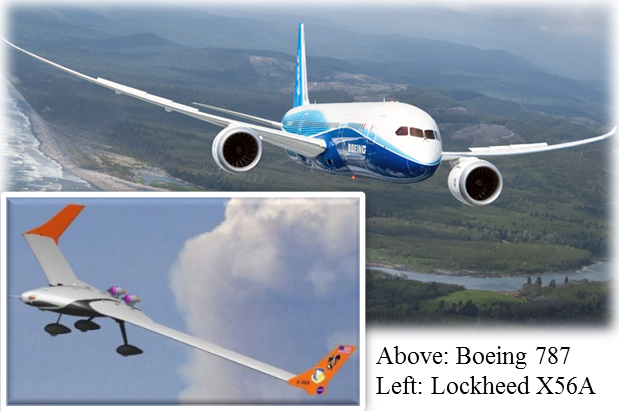Aeroelastic Design of a Lightweight, Flexible Wing
PI Claudia Moreno
Summary:
The need for improved performance and reduced operational costs has led modern aircraft designers to adopt lightweight, flexible wings. A technical challenge associated with these designs is that the large in-flight deformations of the wings lead to an adverse interaction between the aircraft aerodynamic forces and structural forces. Our proposed methodology addresses three key technologies: (i) design, (ii) construction and, (iii) experimental analysis of a flexible wing that exhibits excessive vibrations.
Description:
| A technical challenge associated with lightweight, flexible designs is that the large in-flight deformations of the wings lead to an adverse interaction between the aircraft aerodynamic forces and structural forces. These adverse interactions produce excessive vibrations that can degrade flying qualities (i.e., the ease with which a pilot can handle vehicle maneuvers) and may result in severe structural damages or catastrophic failure. Our intended research is focused on understanding the nature of these adverse interactions in flexible aircraft. The objective is to develop a control-oriented model that captures accurately the structural and aerodynamic interactions for light-weight, flexible wings. Wind-tunnel experiments will be used to update and/or validate this flexible wing model. |  |
 | The proposed research is of significant interest to designers and manufacturers of commercial aircraft. Lightweight, flexible aircraft can achieve fuel efficiency gains and extended range due to reduced air resistance, in turn reducing the cost of operation. Furthermore, transportation is the second largest source of greenhouse gases; reducing fuel consumption will improve the environmental sustainability of air travel. Extended range and fuel efficiency advantages of flexible wings are also being exploited by autonomous aircraft–commonly known as drones–for intelligence, surveillance and reconnaissance missions. Performance characteristics, such as long distance flights at high altitudes for long periods of time, are essential in these military missions. Hence, the design of advanced control systems is required to guarantee performance and safety of future lightweight, eco-friendly aircraft in both the commercial and military domain. |
The outcome of this project will be to develop and enhance a professional, educational, and experimental side to benefit the team of undergraduate students. By integrating both an analytical and experimental point-of-view, the students will gain a better understanding of the research and development process in the aerospace industry, and how to record metrics to obtain a well-founded conclusion. The team of undergraduate students will not only be involved in hands-on experimentation, but also delve into a topic that merges the structural functionality and capabilities of a wing, with a comprehensive analysis of the effects of aerodynamic forces when incorporating flexibility. The benefits extend beyond the very scope of an undergraduate level research oriented course; and its importance stretches from learning about the concept of aeroelasticity to using aircraft instrumentation to design, build, and test models to make deductions and recommendations to the flight control community. |  |
Research Dates
07/01/2016 to 06/30/2017
Categories: Undergraduate
